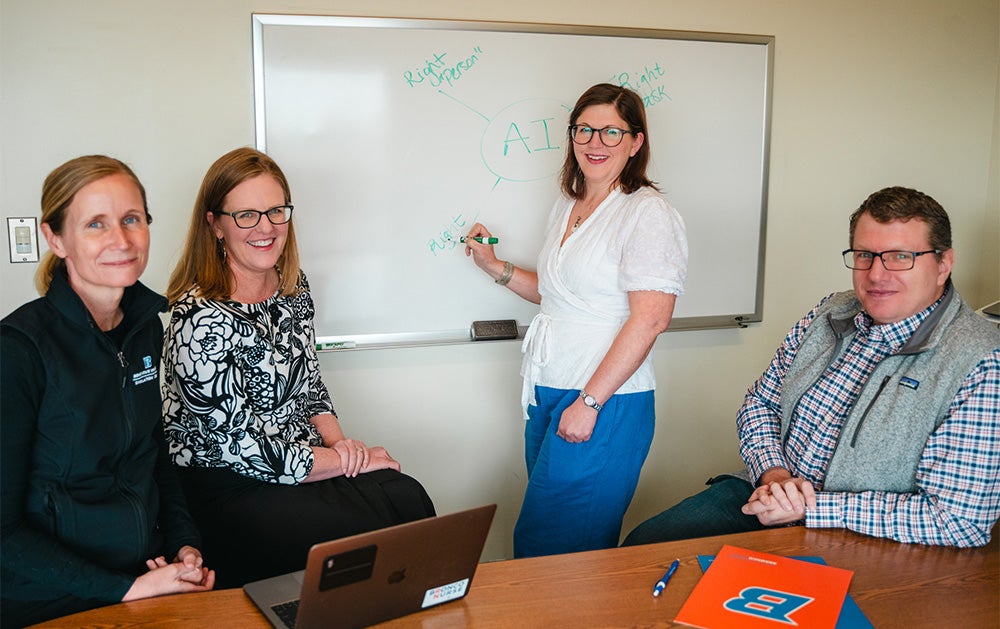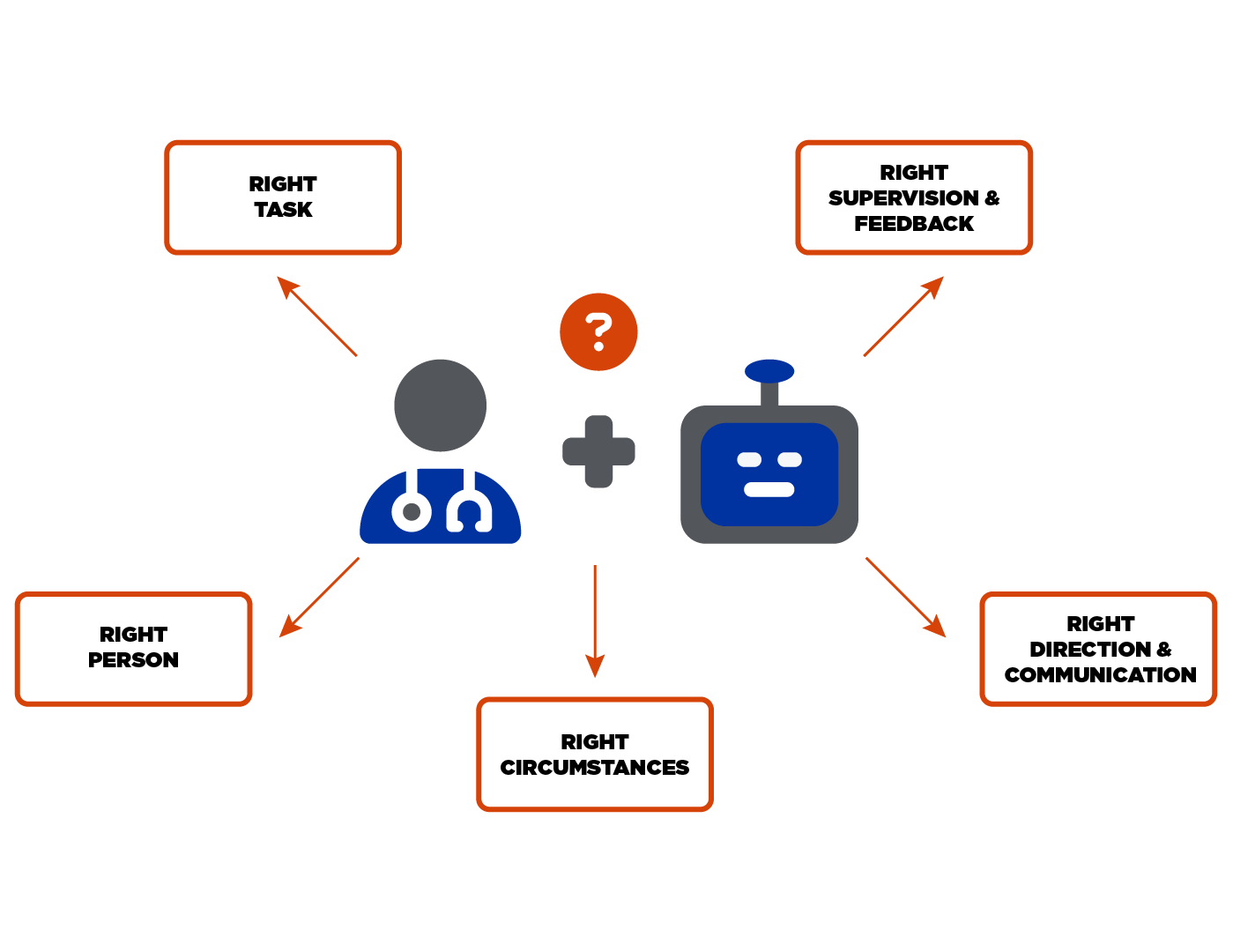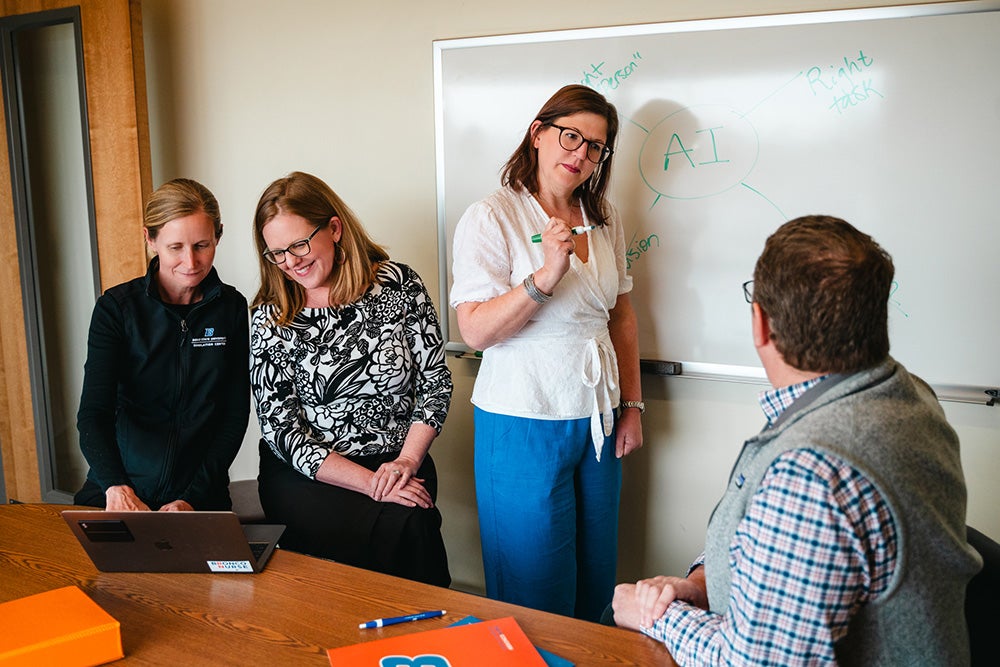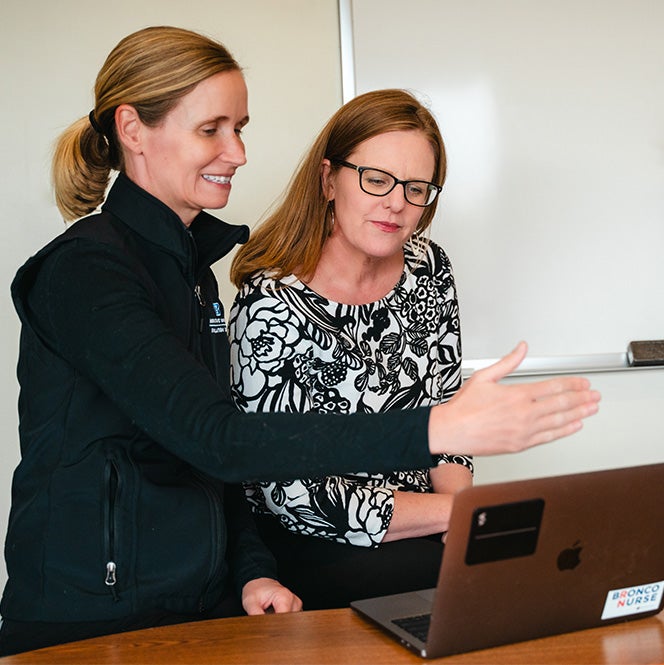A team of nursing researchers are embracing the artificial intelligence tools of the future and helping other educators see how they can be the tools of today.
Professor Kelley Connor, associate professor Jenny Alderden and assistant professors Jason Blomquist and Sarah Llewellyn published their work on artificial intelligence in the journal ‘Nursing Education Perspectives’.
The team’s cutting-edge project evaluates appropriate ways to incorporate large language models – such as Chat GTP – into nursing education through a delegation framework.

“We started this over a year ago when [AI] was really just emerging,” Connor said. “We all recognized that this really changes everything for nursing students…and we need to make sure students are prepared for being able to critically think about what it can offer and how to use it effectively.”
What is the framework?
Nurses learn the delegation framework to enhance accountability and responsibility in their decision-making processes. From a non-nursing perspective, Blomquist describes the model as a decision-making tree.
“You’re deciding: in this particular moment for this particular task, ‘Is this the right tool or the right person?’ and then how do I make sure that if I am saying you can do this task, I’m following up and making sure it’s done correctly,” Blomquist said.
The strength of applying the model to AI, Blomquist said, is that the model requires supervision and closed-loop communication to successfully complete a task.
Regardless of the tool, the framework works
‘Perspectives’ is the bimonthly research journal of the National League for Nursing, giving the team’s work nationwide reach.
Their project came about through brainstorming how to apply AI in education. Like with many new tools or technologies, they wanted to identify the boundaries or ‘rules of the game’ of large language models.
Their publication acknowledges existing concerns about the validity, reliability and ethics of using large language models. They view its incorporation into education as an opportunity for faculty to teach students: a) how to assess the validity and reliability of data AI provides, and b) how to appropriately document and cite the use of AI in their work.

“I think our goal for the publication was to let faculty know that they’re probably going to need to teach students how to do it,” Llewellyn said. “And to not be afraid of it…and not necessarily embrace it fully, be skeptical of what it can do and what it can’t, but that’s where the model comes in.”
They also stress the importance of teaching students how to use AI appropriately “because that’s part of learning in a college setting, is knowing how to use your tools and use them correctly and know what we use as professionals,” Llewllyn said.
“And regardless of what tools come out, the framework still works: is this the right tool to do the right task at the right time with the right supervision?” Blomquist said.Jason Blomquist
The team acknowledges AI assistance as the future reality of healthcare workplaces. Similar to their own experiences in the early 2000s switching to digital health records, they want their students prepared to thrive in this new technological landscape.
“We’re trying to educate nurses for five, ten plus years from now to think through how to use this technology that doesn’t exist today, and be prepared for that,” Connor said.
Empowering our workforce
The use of large language model technology in educational contexts is heavily debated, often argued to be another form of cheating. But industry standards for educating nurses according to the American Association of Colleges of Nursing includes concepts of information and communication technology.

Preparing student nurses to use large language models appropriately only enhances their workforce readiness, since healthcare facilities are steadily increasing the amount and types of AI in their workflows.
“So if [facilities] are saying, ‘Hey, we’re going to integrate this into your practice,’ I want the students to have some working knowledge of what it is,” said Llewellyn. “That’s why having the tech and informatics course was important as we redid the curriculum, because we know these things are coming. We know they’re already in the works, and to not have nurses at the table because the nurse is afraid of it or doesn’t feel like they can contribute? We want our students to be able to contribute when they graduate…”
Ultimately, Boise State nursing faculty want students to graduate as critical thinkers who are equipped to understand and evaluate the credibility of different types of AI.
“Really preparing those nurses of the future is kind of our goal,” said Llewellyn “And so we’re – with this – helping other faculty members to see that maybe they can also incorporate it for their students.”
Just getting started
The team applied the delegation framework in hopes of providing nurses with a familiar entry point to using AI. In their publication, they wrote that their aim is to “begin framing the discussion about how nurses can ethically incorporate these models into their practice for appropriate tasks and circumstances without foregoing accountability.”

Blomquist explained that many headlines in healthcare these days mention AI tools for providers. But few address their impact on nurses. Since nurses are on the front lines of patient care, they need to be able to contribute to the conversations and development of the technology.
“I think that’s the big goal, that we need nurses to engage,” Blomquist said. “None of us are going to be computer scientists, but we should have some basic knowledge so that we can know how to engage.”
“The hope this model provides is an accessible point to begin having a conversation,” said Blomquist.